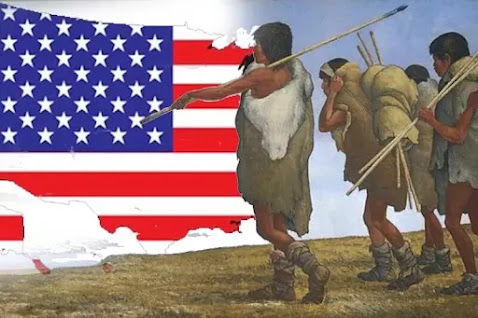When Did Humans First Reach The Americas?
A long-standing debate in archaeology relates to how humans arrived in North America at least 15,500 years ago.
According to scientists, people first came to the Americas by walking south from the now-flooded Bering Strait land bridge, which once connected Russia and Alaska when sea levels were lower during the last ice age. However, recent evidence suggests that these people weren’t the first to settle on the continent.
By the “coastal route theory,” humans did that several millennia ago by boating down the Pacific coast. According to a 2023 study (opens in new tab), coastal conditions were favorable during two-time windows: 24,500 to 22,000 years ago, and 16,400 to 14,800 years ago. It is increasingly clear that the first Americans arrived along the coast by sea or land, even though the science is far from settled.
According to Michael Waters(opens in a new tab), director of the Center for the Study of the First Americans at Texas A&M University, the pendulum is swinging in favor of the coastal corridor being the route taken by the first Americans. “But we still need the smoking gun: a coastal site early on.”
In the past, the best archaeological evidence (opens in new tab) suggested that humans first settled in North America 13,000 years ago. In the early 1900s, Clovis people, whose 13,400-year-old remains were discovered in Clovis, New Mexico, coincided perfectly with the formation of an ice-free corridor along the Rocky Mountains.
To migrate to America, these “pre-Clovis people” would have had to do so long before the ice-free corridor opened up. “The inland corridor opened 14,300 years ago,” Waters explained. “People can’t have come through the corridor 16,000 years ago in Texas and Idaho, and 14,600 years ago in Florida.”
Without an inland corridor from the Bering Strait to take them south, there is no clear answer as to how the pre-Clovis people got to America. Braje said that, since the Clovis barrier was broken in the 1990s, people had been in the Americas at least 14,000 years ago, but no one knows when and by what route they first arrived. “There are now lively debates on the topic, but nobody knows for sure.”
The prevailing theory is that the pre-Clovis people arrived by watercraft. According to Matthew Des Lauriers(opens in new tab), director of California State University, San Bernardino’s Applied Archaeology Program, the initial migrants most likely traveled along the coast.
Des Lauriers described the pre-Clovis as sophisticated maritime hunter-gatherers who would have cast off south from the Bering Land Bridge and consumed fish and game as they voyaged down the Pacific coast. Eventually, Des Lauriers said, these intrepid seafarers parted ways. Some followed rivers inland, while others reached Chile.
According to Des Lauriers, “the ocean would have always provided resources for skilled fishermen and hunters. The most likely scenario is the movement of coastal fishermen and hunters along the North Pacific coast.”
The field of ancient genetics has blossomed, and multiple studies(opens in new tab) have provided further evidence that the first Americans arrived between 15,000 and 17,000 years ago.
The archaeological and genetic evidence is converging to support the same story, Waters said. “Finally, the chronology of the opening of the two corridors is much more clearly understood, and a coastal migration route is evident.”
There is still no physical evidence for either corridor. Before we can firmly pinpoint the lives and times of the first Americans and begin to describe how they arrived in America, significant archaeological, genetic, and geological research will be required.
The Pacific Coast has few pre-Clovis sites. Much work needs to be done to locate potential early coastal sites, Braje said. “We don’t know when and how people first arrived in the Americas.”


Comments
Post a Comment